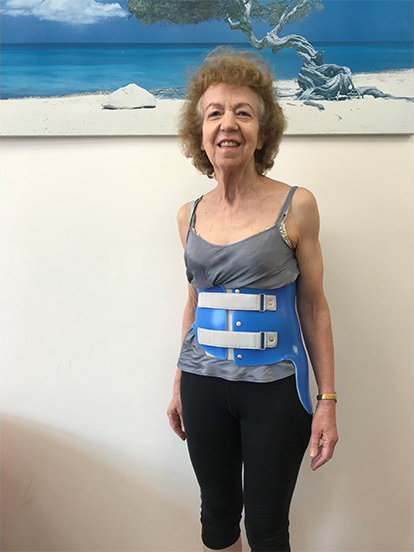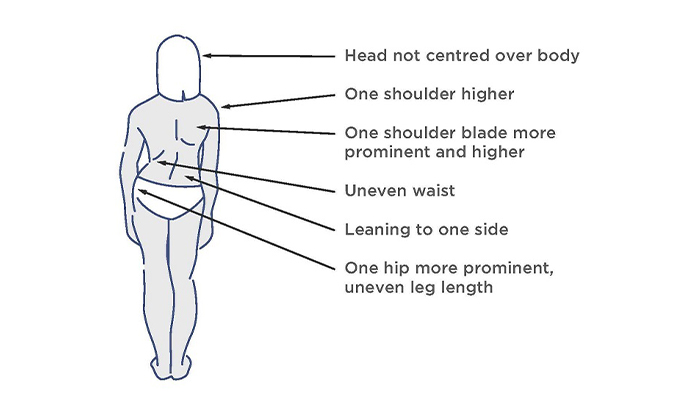
09 June 2020
It is fair to say that Venetia had been through the mill before she came to see us in March. It started about 3 years ago when Venetia kept getting bad cramps at night. Having rejected the quinine prescription suggested by her GP, the next symptoms to appear were pins and needles in her legs. For a time, physiotherapy sessions really helped - but then Venetia started to experience a lot of pain in her hips.
An X-ray showed that her hips were clear but curvature of the spine was revealed. The ensuing MRI scan revealed a trapped nerve and Venetia underwent spinal decompression surgery in September 2018. Surgery really made a difference, according to Venetia the effect was “fantastic”. However, there still seemed to be an underlying problem, Venetia’s self-diagnosis was that her ribs seemed to be impinging on her hips. By this stage her GP had run out of ideas as to how to help so Venetia referred herself to a spinal surgeon who told her she was in much too good a condition to have surgery. Instead, the surgeon referred her to LOC for a non-surgical solution to her condition.
Anna and Debs (part of our specialist Scoliosis team) saw Venetia in early March and immediately diagnosed severe Scoliosis, a subsequent X-ray revealed she had a Cobb angle of 61 degrees. LOC’s treatment plan consisted of a bespoke brace combined with a series of exercises. Finally, Venetia felt that a long-term solution had been found:
“My pain levels are hugely improved, my ribs were tender and now they are not,” Venetia says. “My brace was made individually for me. It’s not one size fits all and, if it is not completely perfect, LOC alters it on the spot. I was so surprised that I could wear the brace under my clothes, I did not need to go and buy anything, I just wear loose tops.”
Venetia’s final piece of advice for anybody coming in for treatment for scoliosis is “they need to do their exercises every day as instructed and to be aware of their posture”.
We took a ‘home video’ of Venetia when she came into the clinic for a scheduled review.
The operation used to treat severe scoliosis curves is typically spinal fusion surgery; a major procedure that involves moving muscles and realigning the skeleton into place. The curved, deformed vertebrae are fused together into a single bone, putting metal screws and rods into the spine to help straighten it. Surgery typically lasts between 4 and 8 hours depending on the severity of the curve. Bone graft is then taken from other parts of the body and used to cover the implants.
Following the operation, it is necessary to spend around a week in intensive care before returning home and the first few days are often uncomfortable. Most adolescents can expect to return to school from 2-4 weeks following surgery, but pain medication may be required up to 6 weeks following. A full recovery from the procedure can take up to a year, as it can take that long for the spine to heal fully.
Spinal fusion surgery causes the fused portion of the back to become permanently stiff, as a result, returning to sports that require large amounts of flexibility (ballet, yoga, gymnastics, dance) or contact (rugby, football, karate, hockey) may take longer.

Visual signs of Scoliosis